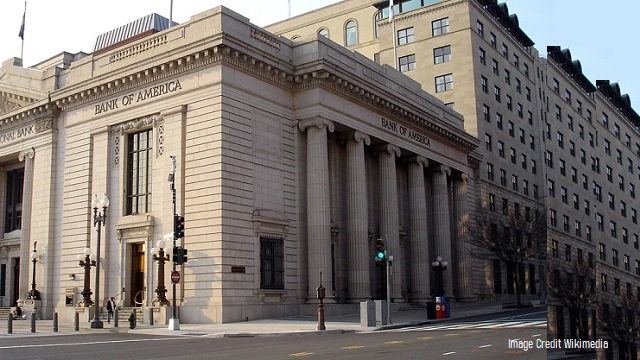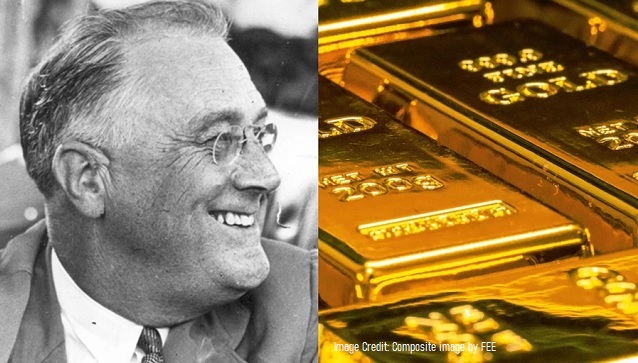What Is Fractional Reserve Banking and Is It Good or Bad?

After the collapse of Silicon Valley Bank (SVB), I received several questions related to the collapse. One by Dr. Michael Overfield caught my eye. He says:
“The question I have is about fractional reserve banking. This is more in the news following the failure of the Silicon Valley Bank. [Some] feel we should outlaw fractional reserve banking. This policy would assure that our banks would have our funds secure whenever any of the depositors want them. But the depositors would have to pay a fee, or negative interest rate to get this service. Additionally funds would not be available for loans for business, homes, education and other needs. I have not seen the issue of fractional reserve banking addressed in the FEE newsletter which I read daily. Thank you in advance for your consideration.”
Before I highlight what I think about fractional reserve banking (FRB) we should spend some time dissecting what it is.
Fractional Finance
Ever wondered what happens to your money when it gets deposited at the bank? Or maybe you’ve just always assumed that the bank keeps it all on hand?
Think again. When you go to the bank and put your money in, economists call this money bank deposits. Today in the United States, banks do not typically keep 100% of deposits on hand. Instead, when you deposit your money, some of it is kept in the bank, but the bank lends the rest out to borrowers looking for funds.
Economists call this system fractional reserve banking because only a fraction of total deposits are kept in the bank’s reserves. This is in contrast to full reserve banking, in which 100 percent of deposits are kept in the bank’s reserves.
To give an example of fractional reserve banking, imagine I deposit $100 in FEEBank. FEEBank can decide they want to keep 20% of my money on hand ($20) and lend out 80% ($80) for a year to earn 5% interest from a borrower.
At the end of the year when the loan expires, FEEBank earns $4 from the loan they gave and pays me 1% interest ($1) for my money.
This is a win-win-win. I earn money while my money is idle. The bank earns money on the loan. The borrower is able to borrow money at an acceptable rate.
When FRB Goes Bad
Despite the upsides, you may have noticed a potential issue with the above example. Let’s scale the bank up a bit to see this issue manifest in a more realistic example.
Imagine FRB on a larger scale. Ten people put in $100 each for a total of $1,000 in FEEBank’s reserves. If the bank wants to keep 20% in reserves, they keep $200 on hand, and they can lend out $800.
Now imagine one customer goes in and wants to take their $100 out. FEEBank has lent out $800 of the $1000 and they have $200 on hand. They give the first customer $100 of the $200 and are left with $100.
But now say a second customer comes in and wants their $100 back too. You probably see where this is going. If the second customer withdraws all funds, the bank is left with $0 on hand.
If any other depositors come in and ask for money, the bank is in trouble. FEEBank has no way of giving depositors the money they request! They can’t simply call back the $800 loan. If this happens, FEEBank goes under. In our modern economy, regulators would come and take over bank operations and FEEBank owners would lose their investments (unless they get bailed out or can borrow the money).
So FEEBank has a decision to make when engaging in FRB. The larger the percent of deposits kept on hand, the smaller the chance that depositors will clean them out. On the other hand, having a larger percentage of deposits means banks can’t make as much money from lending.
Customers experience a trade off too. Banks are able to hold money and offer the customers interest because the bank lends out their deposits. So customers are more at risk when their banks lend out their funds, but they receive a better return.
Should We End FRB?
So, given the risk to customers, should FRB be prohibited? I don’t think so. But I also think that’s the wrong question.
The bank hypothetically not being able to pay back depositors is no big issue. A lot of our financial system is built on risk. When you loan money, you may not get your money back. When you loan money through an intermediary (like a bank), it’s possible they don’t get paid back. And, so long as customers are made aware of the risk that FRBs may run out of money, I don’t see any problem with letting customers take that risk.
If we think people should be able to turn their money into poker chips at casinos, I think it’d be odd to say they shouldn’t be able to turn it into fractional bank deposits.
But, as I said, I think this is at least partly the wrong question. I do think FRBs would exist in a modern competitive system, but I can’t be sure because our banking system is not competitive.
Government facilitated deposit insurance, depositor bailouts, ballooning regulatory codes, and bailouts for banks deemed “too big to fail” make it difficult to know what the banking system would look like in the modern US absent the visible hand of government.
All of this ignores the even bigger government intervention in the world of finance—a monopoly on the production of currency. Economist Lawrence White has written extensively on both the theory and history of banking in a world with competing monies.
In a freer system, I think it would likely be easier to find banks who keep all money on hand and charge a yearly fee, similar to what Dr. Overfield mentions in his question above.
Similarly, economist Robert Murphy has proposed a full reserve system which doesn’t require yearly fees and allows for lending by having depositors agree to lock in their funds for a specific amount of time which matches with the loan maturity.
12/n The idea is that for genuine demand deposits (checking accounts), banks should keep 100% in immediately available funds.
— Robert P. Murphy (@BobMurphyEcon) March 11, 2023
Of course, this system still runs the risk of companies not being able to pay back their loans therefore making banks unable to pay back depositors. But it is, at least, an alternative option to the somewhat bland world of banking choices available today.
In summary, I don’t find FRB to be illegitimate, ethically or economically. Businesses constantly manage and weigh risks every day that, under certain circumstances, could blow up in the faces of owners or customers.
So long as customers are not defrauded by promises of it being completely risk free, my assumption is some successful entrepreneur will be able to effectively manage the risk of fractional reserves to provide depositors with a relatively high return.
But I am bothered by how standardized the banking industry is today and how few options there are for customers. It seems unlikely to me that in a world free of layers of subsidization, regulation, and monetary monopoly that our banking system would look like it does today.
AUTHOR
Peter Jacobsen
Peter Jacobsen teaches economics and holds the position of Gwartney Professor of Economics. He received his graduate education at George Mason University.
RELATED ARTICLE: A Billionaire Progressive Has Transformed America—by Destroying It
RELATED VIDEO: How to Survive a Bank Collapse
EDITORS NOTE: This FEE column is republished with permission. ©All rights reserved.



